
Issue #: 138
Published: November / December 2014
- Price per issue - digital : 5.40€Digital magazine
- Access to Multihulls World digital archives Digital archives
It was a year ago that the Cataja cast off for a long voyage. Loyal Multihulls World readers, Eurielle and Antoine let us in on the technical and financial inside track on what has been a special year.
We have been in a relationship for 12 years, and throughout this time have always made a point of having joint projects, something which we believe to be essential in the life of any happy couple... Buying our first house, the birth of our first child, our latest investment, our marriage, our travels, our second and third bambinos... All great, successfully accomplished projects. After all these years, and having spent so much time homebuilding, we began to think about getting away from it all, but it did take a while to come to fruition!...
It all began one summer day in 2007 when Antoine suggested that we spend a week's holiday with a couple of friends, on a charter catamaran... At that time, Malo was 3 and a half years old, and Elian just 8 months. The idea didn't exactly fill me with enthusiasm. You can imagine that as a mother, all I could think about was my little guy deciding to take a trip overboard! Thankfully, my fears were unfounded, and we spent a wonderful week around Porquerolles in the South of France. We continued to charter a catamaran in each of the following years, and every time we enjoyed it just as much and were always impatient for the next holiday to come around...
"What if we left everything behind and set off in a catamaran? We could travel the world in our home with our kids. We'd have a different outlook at breakfast-time each morning if we wished, we'd meet loads of new people and we could just go wherever we felt like going...." These were the kinds of ideas that Antoine started to sow in my mind!
You probably think that that sounds pretty tempting. However, it took a while to take the idea on board as I'm a fairly down-to-earth kind of person, and had lots of worries and questions which needed to be addressed... I managed to answer some of the questions at the many boat shows which we visited... By going through this process, we were able to start dreaming about one day setting out.
Eurielle and Antoine, happy with their new life on board a catamaran.
Dreaming is all very well of course, but how does it work in practice? At the time it was all still a bit vague. We took our time to decide. Then in the summer of 2011, we met a family which had decided to leave everything behind and live the same dream, and that was the catalyst!!! Why wait any longer? Why risk missing out on our dream? Why take the chance of something cropping up and stopping us leaving? Too many of our close circle had been struck down by illness... When our children would be older, everything would be much more complicated! We decided that we were going to do it, and not in 2016 as we had originally planned, but much sooner! And we would sell our house rather than rent it out, sell our furniture and not put it into storage, sell the cars and not leave them in the garage... We only had one thing in mind from that point on...Everything must go, and quick! Having spent years amassing things, and buying and accumulating loads of stuff, just to be able to make a respectable home, to be socially accepted, and for all sorts of good and bad reasons, it was time to get rid of everything. There was another realization too: it was time for us to live out our dream as a family!
Cataja, a Bahia 46, is the family's new home.
In November 2011 everything started to move quickly. We put our house on the market. In May 2012 we found a buyer, crossed our fingers, and sold it in September 2012. Alongside that, we had found a house to rent where we could be comfortable in the months where we would be putting everything together. We began the search for our future boat, reading and re-reading Multihulls World, looking on the internet and all sorts of classifieds and blogs... In the October, we thought that we might have found the boat that we were looking for, but things didn't go as planned... I take the view that things should happen smoothly, but our emotions went from disillusion to anger. We had assumed that buying our floating home would be a pleasant experience. However, we quickly realized that things weren't as simple as that! It wasn't as though we were just buying a boat that we would use for a few weeks per year. We were buying OUR HOME, in which we would need to feel safe and secure, and which would please everybody!
At last, in November 2012 we found a boat which appeared to tick all of our boxes. From that moment on we would concentrate all our research onto that model, and a few weeks later I spotted an ad for a Bahia 46 in Lorient, a mere 1000 km away... We had already viewed two others, but this time I had a feeling about it, and I told Antoine that this one would be our boat! I was convinced, but it needed checking out (to save money, Antoine went to view it alone). I wasn't wrong, and we made an offer, signing the final papers on Christmas Day! What a great Christmas present!...
Thanks to our boat, last summer we were able to set out to discover the four corners of the world!
Despite being in the middle of the Atlantic, Father Christmas didn't forget about the family!
As far as the financial assessment is concerned, it's difficult to be precise. This is partly due to the fact that we are poor money managers, and this didn't improve at sea, but mainly because there are so many costs which need to be taken into account before arriving at a result...
Let's go back to the start... To be able to set off on our journey, we had decided to sell everything: house; cars; furniture; personal items. Our whole world is now on board. Which means of course that we have nothing on dry land. No rent to pay on a house, no local taxes, no house or car insurance, no more bills for electricity or heating, no more childminder or gardener, no land line telephone or sports club membership... That's a few weights of our mind for starters!
But don't forget that setting off on a boat generates its own costs...
One of the first issues is the boat itself, as its size means that it will need a certain amount of maintenance, repairs, insurance and various mooring charges throughout the voyage... One of the next things is the varied choice of lifestyles of different families, which is as vast at sea as it is on land. Whilst we might prefer a mooring to a marina, using public transport and only renting a car on certain islands and limiting the number of visits to restaurants, other families will treat themselves every week. Then there is the question of the crew's ability to repair any breakages. For a ten year old catamaran, you need to work on a budget of euros 140,000 for a 38/40 footer, and between euros 200,000 and euros 300,000 for a 44/48 footer. And that's without all the equipment which is often necessary...
What about the equipment? Before casting off, we often heard the question "Is your boat ready to go?" What did it mean? Ready for what? We didn't understand... And if we'd waited until it was "ready" we never would have set off! Above all, a boat is the sails, the rigging and functioning engines. There is no room for maneuver on these three things which is why they had a full service before we left. Everything else is just comfort.
The kids really learned a lot during this first year, especially how to be independent!
- Energy and water self-sufficiency!
We initially changed our battery bank when we bought the boat, replacing it with 7 105A marine batteries. Our electricity is produced by four 90A/h solar panels, and when moored, we can survive for several days without firing up the engines. As a backup, in case of bad weather, or to run the washing machine, we have a 3.8 Kw generator. This is a really useful addition that we wouldn't give up. We only have a small 12v/220v 600w converter, so our washing machine necessitates the use of the generator, as do our raclette evenings whether in Siné Saloum or in the middle of the Atlantic! Magic! :)
- A washing machine is absolutely essential with 3 kids!
Once again we are fairly independent, and avoid having to spend a fortune in laundromats... If you have the space, it really isn't a luxury! In terms of price, we found one in a supermarket for euros 250, a long way from the thousands of euros for machines which are specifically for boats...
- The desalinator: a revolution! We started to use it once we had arrived in the Caribbean as before that there had been ample opportunities to fill the tanks with water (we paid between 0 and euros 20 for the 700 liters that we could take on board). At the moment, we produce our own water every two or three days, at a rate of 50 liters per hour. Although every liter is used sparingly, at least we aren't worried about running out! For health reasons, we don't drink the demineralized water and buy bottled water. Also, by making your own water, you can avoid putting into port and so stay far from the many temptations that exist on land...
All the family in their boat!
- Our Bahia is equipped with 2 x 36hp Yanmar engines. They are very reliable and always start first time. Our diesel tank holds 400 liters, which gives us a certain amount of autonomy, and in a year we have only filled up 5 times. It's worth noting that for the first two months of our trip, there was no wind!
- As for the sails, we have a mainsail, a genoa, a spinnaker and also a gennaker (a new one awaits us upon our return in September, as the old one literally ripped into two). They all seem useful, (although the complexity of setting it up and the stress when the wind whips up mean that we don't use the spinnaker very often) and provide the security of being able to move around quickly, particularly when there is bad weather.
- Speed was not really a consideration when we bought the boat. We knew what the boat was capable of, but hadn't grasped the value of being able to go "fast". Now, we try to sail fast not just because we enjoy it, but also because those extra knots can save you precious hours or even days on your journey times... And as not every journey is pleasant, it's sometimes good to get to one's mooring quickly and to be able to relax!
Cataja can easily maintain an average of 7-9 knots, and then surprise us, hitting 12 knots sailing downwind under spinnaker. We often turn on the engines when sailing between 3 and 4 knots. Contrary to the general perception of catamarans, our Bahia is pretty good sailing upwind, which always surprises our single-hull friends.
- As for the electronics, we are still using our iPads to navigate. We have two in case one breaks down. One was bought new, the other was second-hand, bought just before we left, for a total cost of euros 800. We use Navionics charts, which are available on Android for euros 49 per chart. They are clear and precise. We spent euros 250 purchasing charts which cover the whole world.
- For getting around we recommend a good, motorized dinghy! We are very happy with our Caribe and its 15hp Yamaha Enduro engine, which is the envy of the other boats! Thanks to our dinghy, we can transport all of our supplies and move the five of us around quickly, whilst others struggle once they are loaded up.
- For peace of mind, a good anchor is essential: vital even! We have a 35kg Cobra with 70 meters of 12mm chain. It's the reason that we don't have so many scrapes to tell you about.
We do regret though that part of our fridge has not been working since we set off. We now have to use the freezer as our fridge, which means that we can't freeze food anymore. And depending upon the country where we find ourselves and the choice and cost of the food available, frozen products would be very much appreciated and cheaper! I don't need to tell you what rapture can be induced by a chocolate/pistachio cornetto ice cream!!
The first year summed up in one word: happiness!
In the West Indies, it costs around euros 2,400 to haul out and relaunch the boat. In 2013 we paid euros 5,000 to uncover the primer, and to sand blast and apply the anti-fouling paint. They must have seen us coming! That was at Port Napoleon in the south of France. The quotes for the same service in Brittany were around euros 2,000, but for weather and timing reasons, we had no choice. No comment...
It's worth noting that a berth in a port costs on average euros 35-70 per night, which is about one and a half times as much as a monohull. Water, electricity and a wifi connection are usually on top. However, the prices are the same as for monohulls when mooring on a buoy.
For peace of mind, when mooring your dinghy in a port, it's worth having a big enough padlock and cable (ours is 6m) to be able to attach the jerry-can of gasoline! Thefts of gasoline are a reality depending upon where you are. In some countries, such as the Cape Verde islands, make sure you have some cash with you to pay for "dinghy surveillance." A nice way to call what is a very lucrative business.
Once out of the European Union, we had to pay the costs associated with arrival and departure declarations, whenever we reached a different country. Thankfully, these costs are usually quite small (between euros 10 and euros 100) although some countries like Antigua make no bones about charging every passenger, including children, just for a basic mooring, which definitely makes you think twice... In some countries, such as Senegal, a visa is required. Ours cost euros 270 for the 5 of us, which we paid at an office in the airport.
Depending upon which countries you are visiting, vaccinations can be necessary. We had them done in France before we left. When the vaccinations are not obligatory, they are not reimbursed by the social security system... We ended up spending euros 500 for the 5 of us. It's worth noting here that we got our yellow fever vaccinations done in Gibraltar, after deciding to head to Senegal. If we'd known the ins and outs before leaving, we would've had them all done there! We simply went to a vaccination center in the trading port, asked for our vaccines and paid euros 18 per person. We were only having one vaccine, but it would have been the same price if we had had more. You don't pay for the number of vaccines that you have, just a state tax... Work it out for yourself! And whenever travelling around Africa or South America, it is always advisable to treat against malaria. We decided it was indispensable as we didn't want to take the risk travelling with three children. Calculate on average euros 40/45 for a box of Malarone for children (two and a half days' treatment) and euros 10 for the Doxycycline for adults (around 4 days of treatment depending upon your weight). It's a small fortune when you think that we only stayed in Senegal for a month...
The adventure goes on: the family have set off on a second year of life on board.
If you want to set off with real peace of mind on the health front, you need health insurance. We chose a worldwide insurance which kicks in from the first euro. It covers us anywhere in the world and includes medical assistance, repatriation and payment of all hospital charges without any excess or minimum amount. We need to inform the insurance before any consultations. Thankfully, we only had to make use of it twice, once for Pacôme and once for me: euros 350 to a clinic in Ibiza which was reimbursed. For the 5 of us it cost euros 2,675 for the year (I've found a cheaper one for our second year) Watch out though. Finding this kind of insurance at an affordable price is not easy, and I had to get in touch with at least 15 companies, as most people assume that if you go travelling with your children, you must be super-rich. The insurers play on the essential nature of their product, and quoted up to euros 11,000! No, I kid you not! I laughed out loud and almost choked when they told me the price over the telephone. The fact is that many of these policies are aimed at expatriates for whom their employer is footing the bill, so they obviously make hay while the sun shines!
Whilst we're on the subject of insurance we mustn't forget to mention the boat insurance, which as you can imagine, is a hefty slice of our budget! When we left, we were insured by Helvetia, via a broker who we had met at a boat show. It was by far the best offer we had found, and so we took their fully comprehensive insurance as far as Cape Verde for euros 1,800 per year. The idea was that we would let them know of our arrival in the Canaries before moving up to transatlantic mode, when the price would rise to euros 2,600. This was still the best price that we had found. However, we didn't count on our insurer dropping us ten days before we were due to leave the Canaries for Senegal. According to our broker it was because the insurance company had changed their coverage... What? OK but what do we do now? "I can give you the details of an agency which offers other types of contracts." Well that's all well and good but... "Hello Mister Insurer, how much is your policy? Blah blah blah..." "I can offer you a policy for euros 5,400! Are you joking? We never budgeted for that amount. It's double what we expected to pay! All this meant that we had no choice but to look for an insurer whilst in the Canaries, with a poor internet connection and the disadvantage of not having been insured by the companies we contacted when in Europe, so they did not really want to insure us for a transatlantic crossing! We managed to find "refuge" with a British insurer, RSA, paying euros 4,600 for the year, but without the necessity of having to have the boat checked out and approved again...Gulp!...(If any readers have any good leads on insurance, please let us know!)
Underwater..
As regards communicating with the magazine, having some internet access and a bit of 'phone credit, we bought a 3G card in each country. We kept Antoine's monthly deal from France at euros 24 per month, just so that we always had a telephone just in case. On average, the internet cards cost between euros 10 and euros 25, but the length connection time varied greatly from country to country! A gigabite obviously runs out more quickly depending upon the operator. So in Spain, we were up to euros 100 per month for top-up cards and communications, whilst in Senegal we were down to euros 10 with amazing Skype in the middle of Sine Saloum, and between euros 40 and euros 60 in the West Indies... We are on a constant pilgrimage to find free wifi zones! We also have an Iridium telephone, which we bought just before setting out, with a 200 minute card that is valid for a year.
When we go inland, we regularly rent cars which cost us between euros 25 and euros 60 depending upon where we are.
Beforehand, we had reckoned that we would spend less in the West Indies than the Balearics or the Canaries. How wrong we were. Supplies cost us 40% more than in the low cost shops in France or around the Mediterranean! Any boat parts cost 30% more as well... The prize for the cheapest place goes without any doubt to the Canary Islands whilst the most expensive goes to the British Virgin Islands! But whatever the case, we always spent more than we expected, even though we didn't necessarily buy any extras...
...or on the boat, the kids have a great time!
Without counting the purchase of the boat, but including boat charges, insurance costs and living costs, we spent between euros 30,000 and euros 40,000... We would suggest that you work out and compare what a year on land would cost you with all the associated costs... We did meet crews who had set out with smaller budgets, but they often had smaller boats or smaller families... We are hoping that our next destinations will be a bit less costly... Watch this space...
Perfect beaches and white sand: the daily grind for the Cataja Crew since they left France. One thing's for sure: they don't regret a thing!
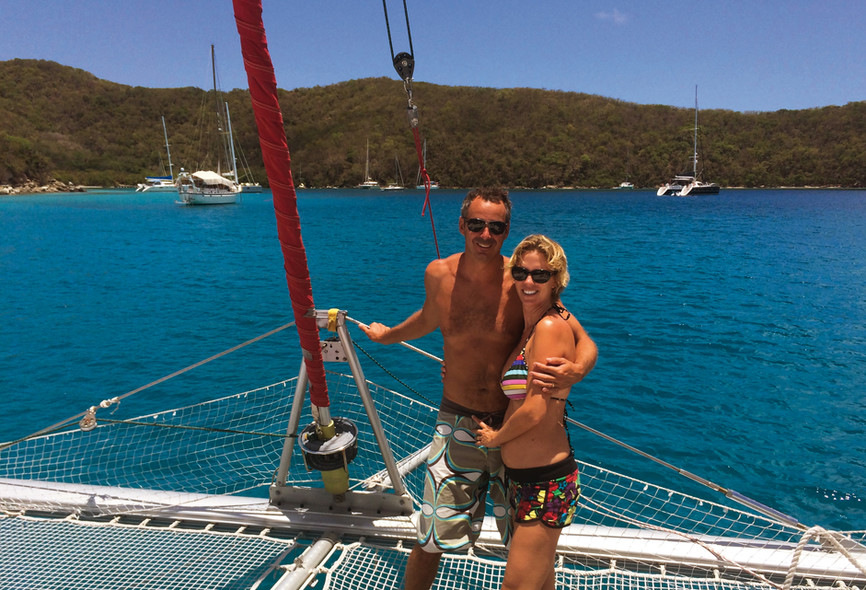
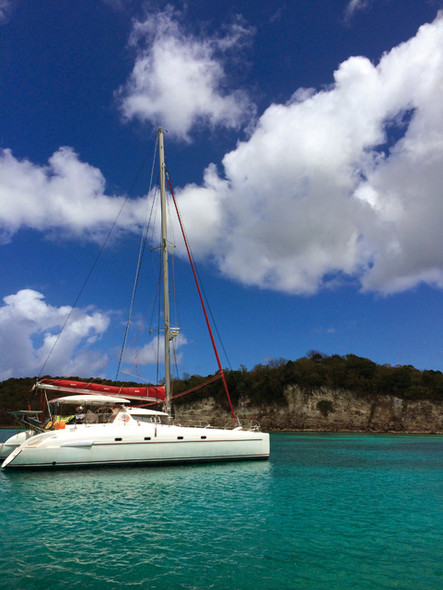
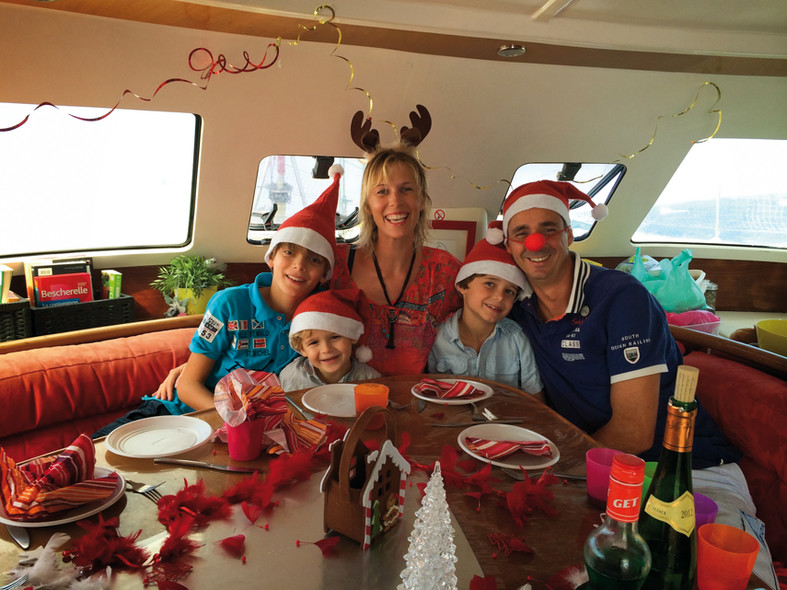
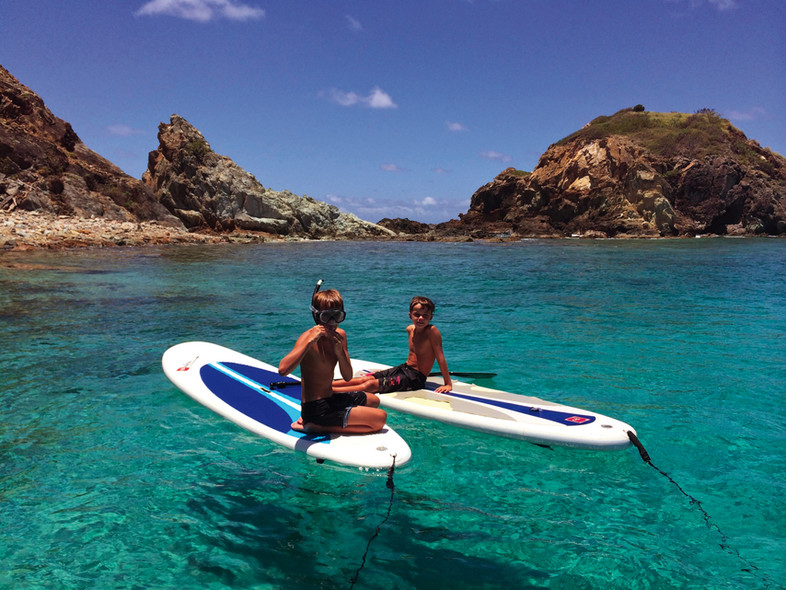
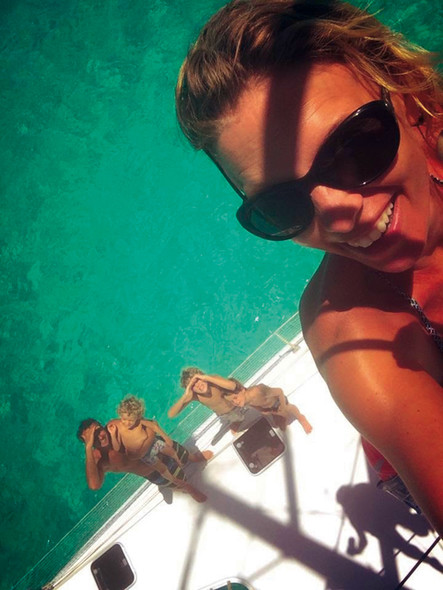
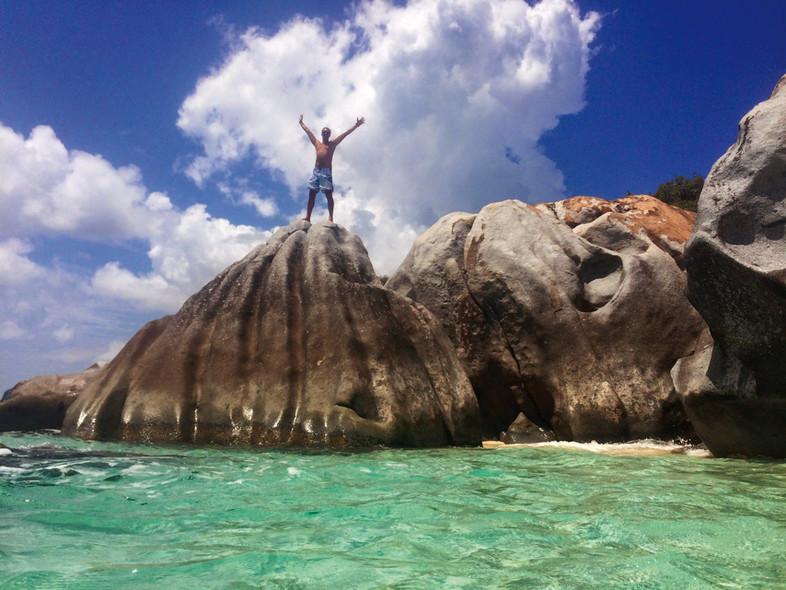
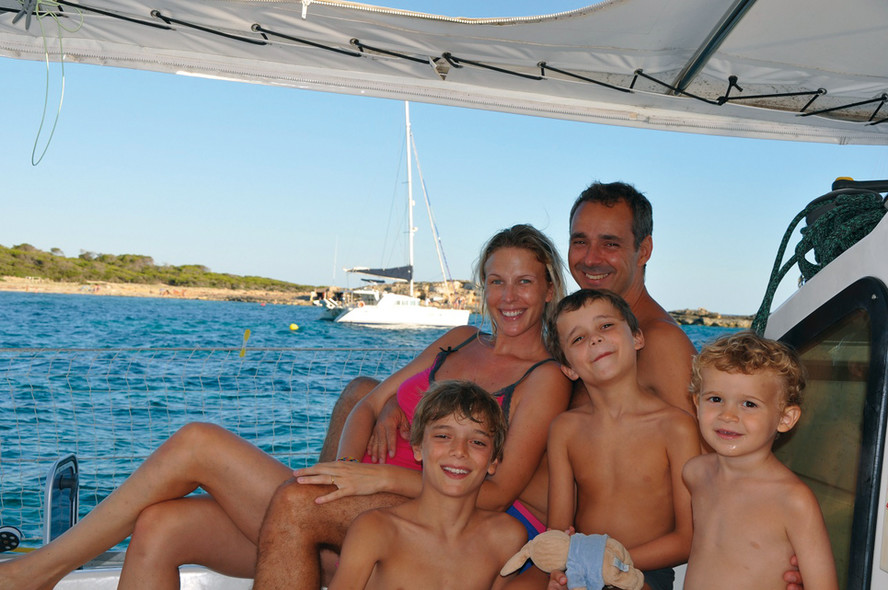
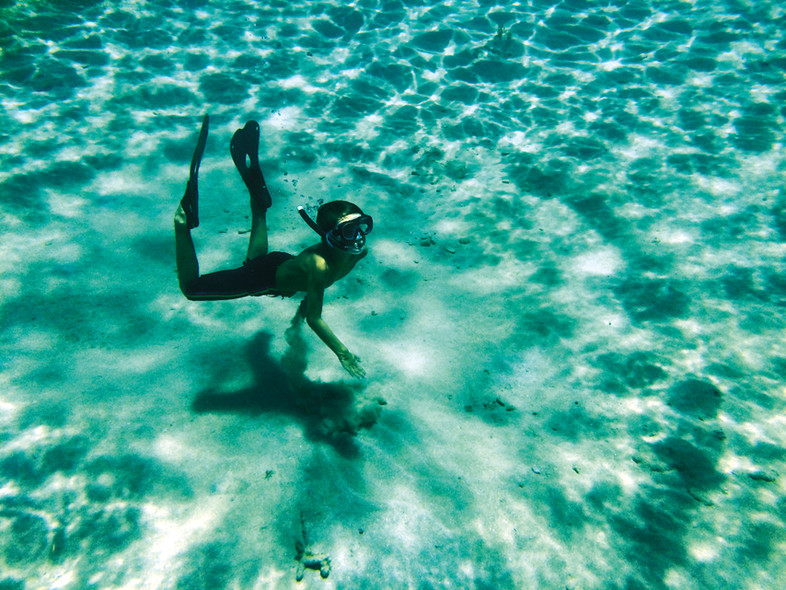
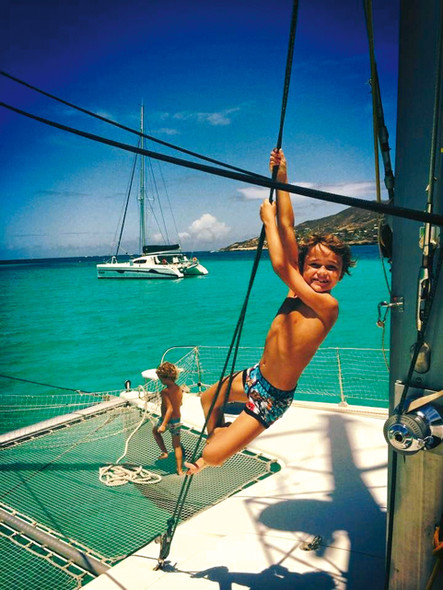
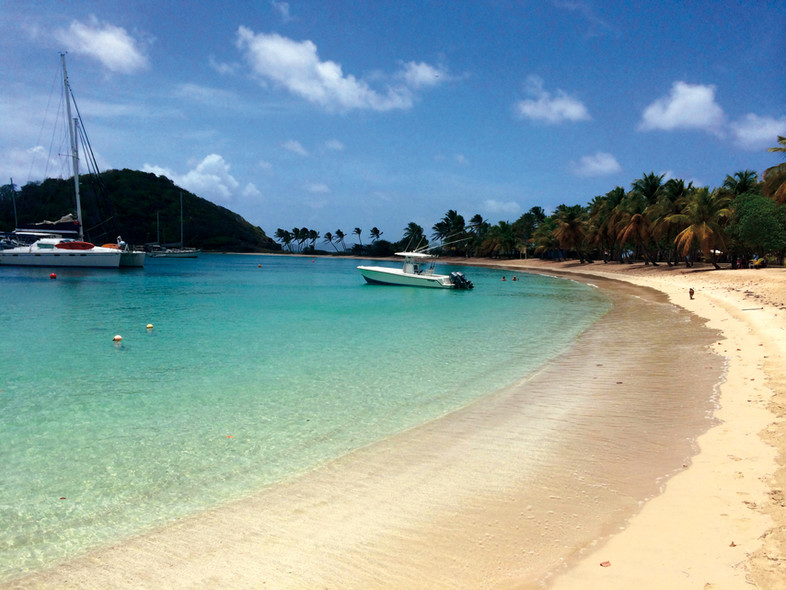
What readers think
Post a comment
No comments to show.